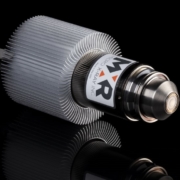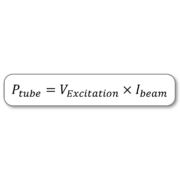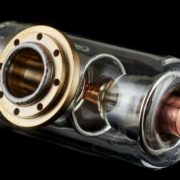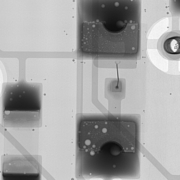Operational Tips: Why is High Beam Current at Low Excitation Voltages So Hard?
Why is High Beam Current at Low Excitation Voltages So Hard?
In a lot of cases with X-ray tubes, more is better. More excitation voltage (kV), more power, higher flux density, etc. After all, most of what we do in X-ray analysis is about statistics. The more electrons in your beam, the more X-rays your tube will create. Looking specifically at X-ray fluorescence: the more X-rays in your primary beam, the more secondary fluoresced X-rays you can read from your sample. When you’re analyzing your spectrum, the number of X-rays at any particular energy level compared to both the other peaks and the total X-rays counted can tell you how much of a material is present. As with any probability based counting statistics problem, the higher your total count rate, the greater confidence you have in your results. This is why with XRF machines, you gain higher confidence in your results as you increase your exposure times.
If you’ve ever asked an X-ray tube manufacturer how low of an excitation voltage you can use with their X-ray tube, you’ve probably heard a lot of them hedge their bets in their response. If you’ve asked the next logical question, and asked how much current you can run at low excitation voltage, you’ve likely seen them squirm uncomfortably. This is because standard XRF tubes are optimized to run at above 10kV. When you start running lower than 10kV, the fields around the electron gun require special design consideration for efficient electron extraction. This means more electrons have to be available in the electron cloud as you decrease excitation voltage, just to maintain the same beam current. This has the net effect of requiring uncomfortably high filament currents for many tubes, leading to rapid filament evaporation at low excitation voltages.
Why run at low kV?
Let’s take a step back and ask why you would want to run at low excitation voltages in the first place. When you’re looking for low-Z elements with XRF, the K and L lines you’re looking for are so low that using higher energy X-rays isn’t going to cause high levels of fluorescence, and other peaks in the material you’re analyzing may drown out the low energy peaks you’re looking for. The best way to fluoresce a light element and obtain a spectrum that’s reliable enough to perform complex XRF calculations on is with a relatively low excitation voltage X-ray source. A low kV X-ray source can efficiently excite low-Z elements, while ignoring any high-Z elements that may drown out the small signals.
What’s the problem with low kV operation?
The truth is, many 50-100W X-ray sources on the market today just aren’t designed to run at low kV. The electron gun design for a 50kV excitation voltage doesn’t always work like you’d want at 3kV. The higher that potential difference between the anode and the cathode, the more electrons travel from the cathode to the anode. That means that as we decrease the excitation voltage, we have to increase the filament current in order to maintain the same beam current. At some point, you just can’t increase the filament current more without overheating it and causing it to burn out.
Between the filament’s natural limit, and the electron gun optimization at a higher potential energy, many tubes are simply not capable of running at low excitation voltages. Because of this, many manufacturers impose a limit on minimum excitation voltage, or limit the amount of beam current possible at low excitation voltages, or both.
What’s the High Flux, Low Excitation Voltage Solution?
For XRF applications that demand low energy operation, our Lightbright tube can deliver. It has been designed with a robust filament and a high extraction electron gun that can support continuous operation up to 11mA all the way down to 3kV excitation voltage.
Compared to a competitor’s tube, the Lightbright can deliver many times more flux at the lowest excitation voltages, without sacrificing tube life. This groundbreaking beam current capability, combined with the Lightbright’s end window design to minimize source to object distance, means that for light element XRF, there’s no better tube on the market.
Contact us today to learn more about our high flux, low kV X-ray tube options and how you can unlock your low energy XRF system’s full design potential.











